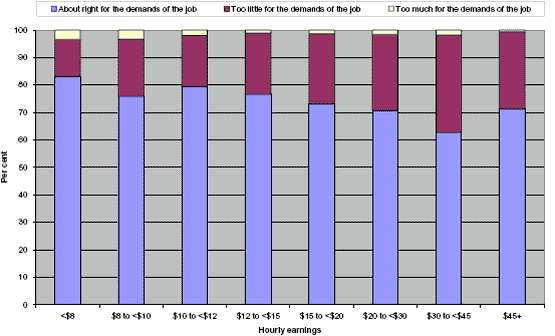
Evaluation of the amount of training taken (2001)

In The Budget Plan 2005, the Government of Canada says: “Continued improvements in the living standards of Canadians will have to rely increasingly on productivity growth. Therefore, to increase living standards, Canada must continue to invest in the drivers of productivity growth: human capital, physical capital and innovation. Building on a sound fiscal foundation, the role of the Government is to enhance and strengthen policies that encourage all Canadians to invest in these drivers of growth.” This section will review recent and current Government initiatives – mainly federal and some provincial – that are parts of the framework to encourage those who are the best positioned to invest in the drivers of productivity identified, i.e., individuals and businesses.
Over the last two decades, the Federal Government created a number of structures and programs to promote a “training culture” in Canada and support an increasing investment in training on the part of Canadian businesses.
CLFDB: In the late 1980s and early 1990s, the federal
government explored options for
engaging the private sector in training and human resources issues. In 1991,
it launched the
Canadian Labour Force Development Board (CLFDB) and collaborated with some provinces
in
the establishment of a network of local labour market boards. Inspired by European
models of
business and labour co-management, the CLFDB was a departure from previous practices.36
36 According to a recent Canadian Background Report (OECD, 2002a), the CLFDB experiment was not very successful. However, according to the report, the regional boards did succeed in creating effective networks between industry and the education community, and the CLFDB provided leadership in the areas of labour standards and Prior Learning Assessment and Recognition (PLAR).